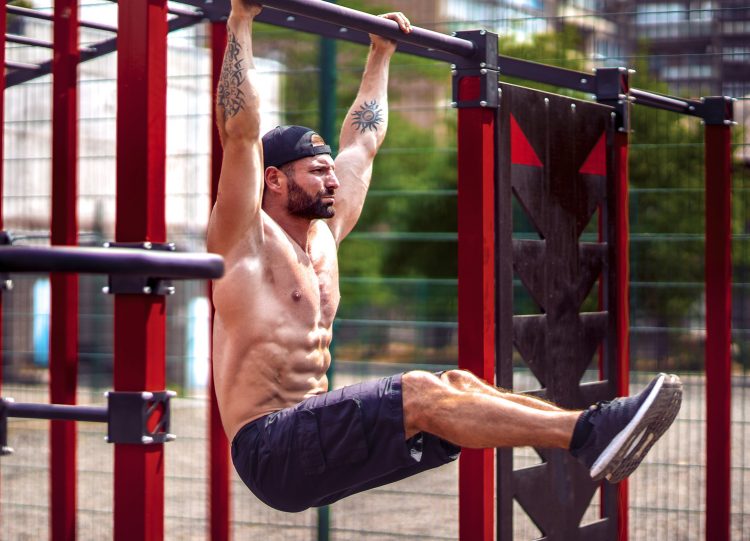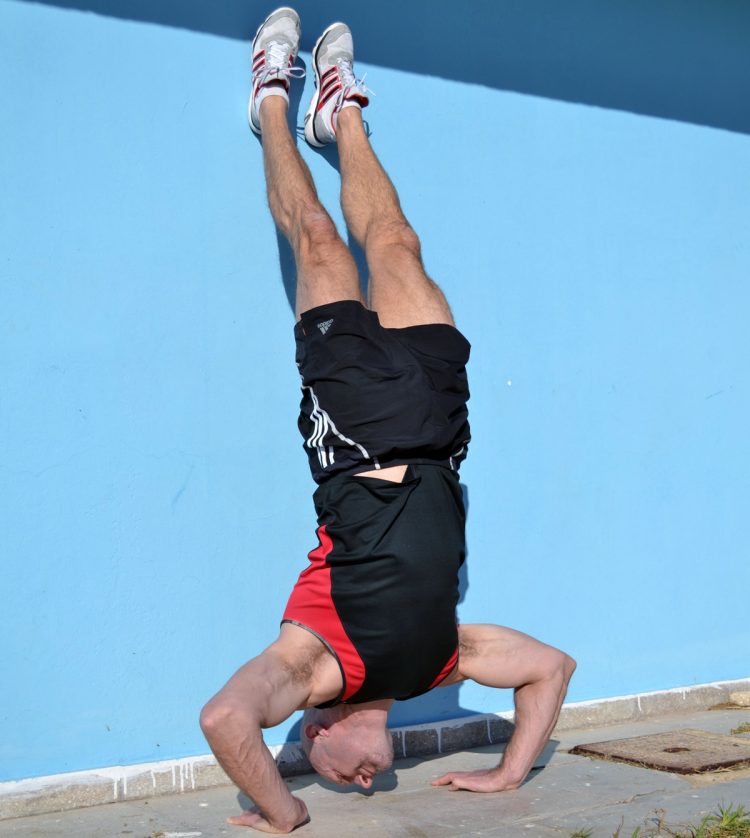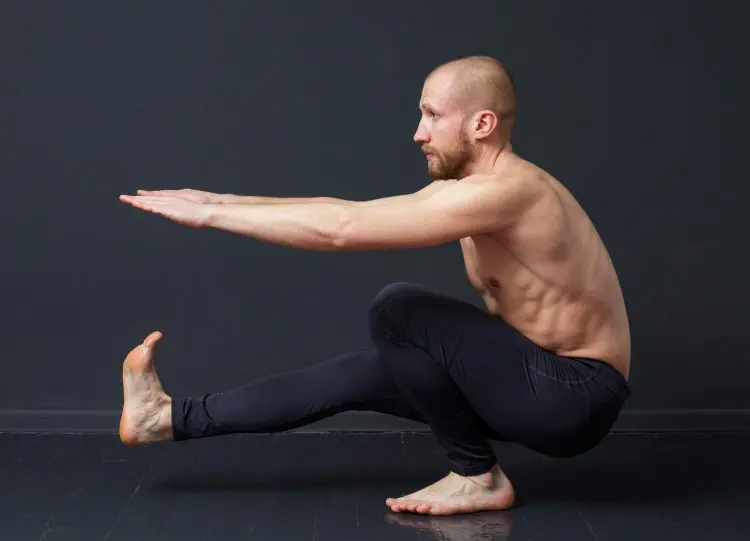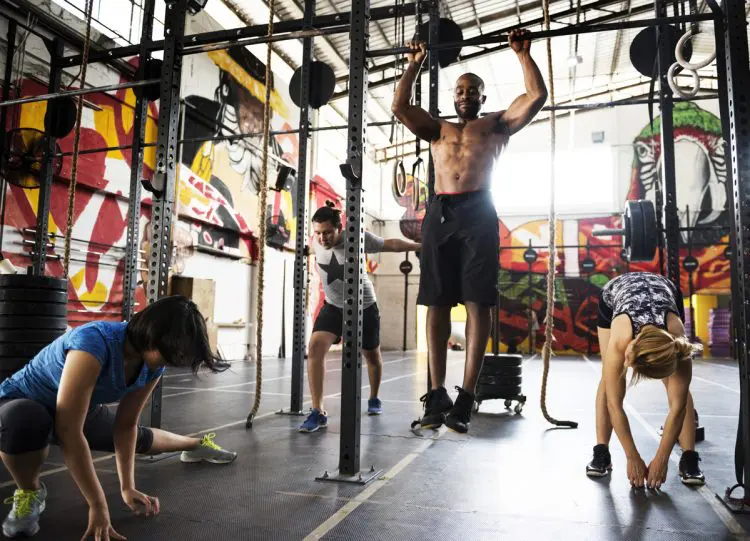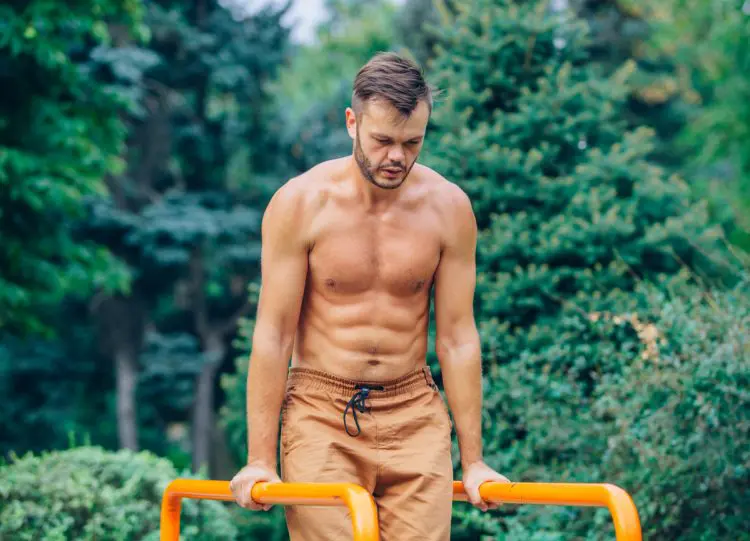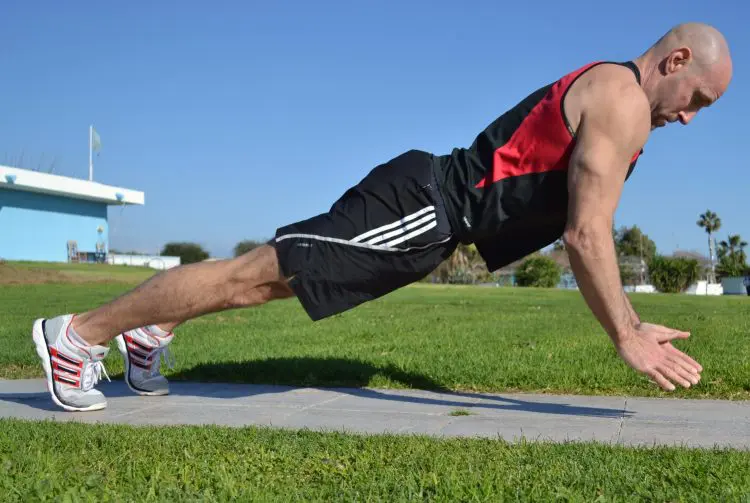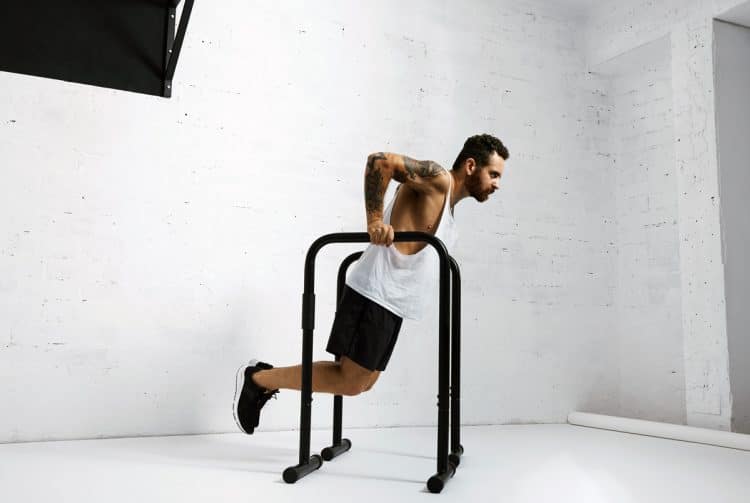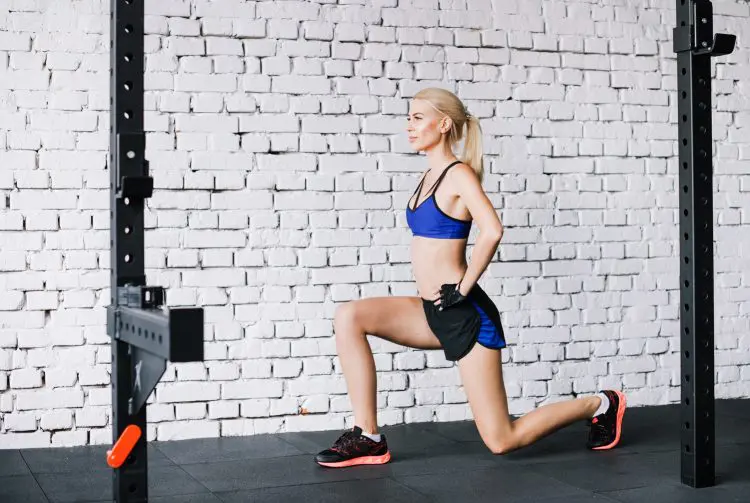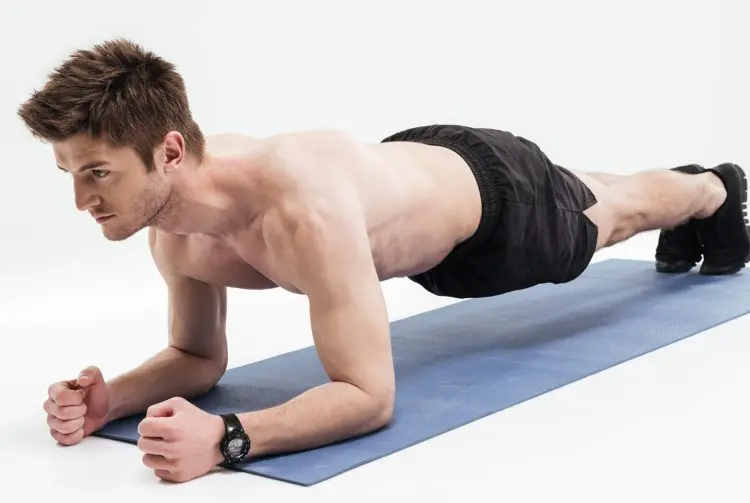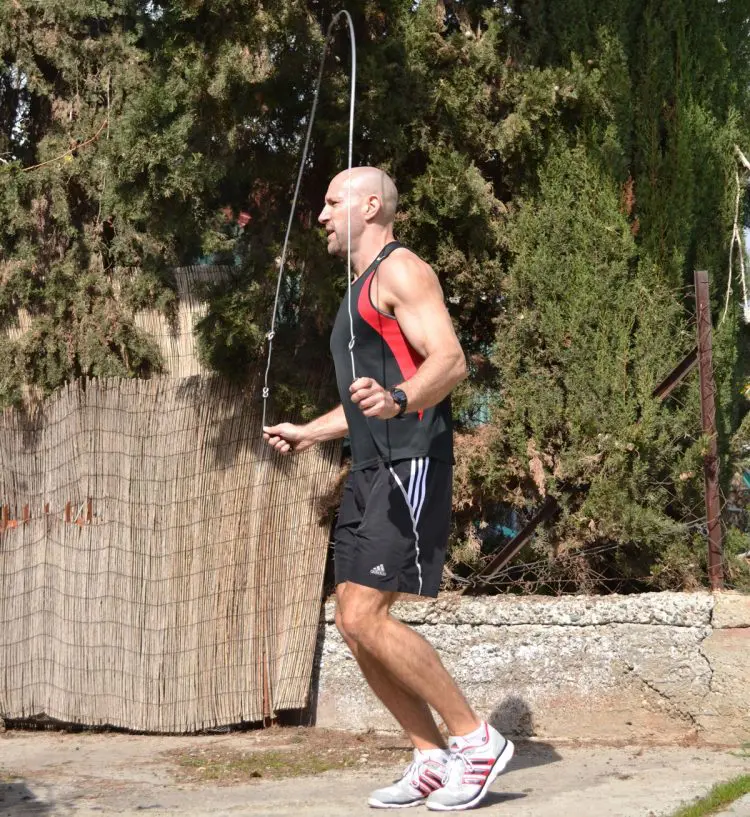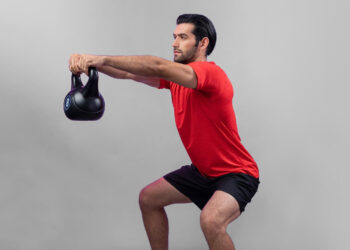Strength training often seems very complicated. With so many different types of equipment to use and training programs to follow, it can be hard to know where to start. Should you use free weights, or are machines your best option? Are kettlebells better than dumbbells? Should you do full-body workouts, or would a split routine get you better results?
Decisions, decisions!
But effective strength training doesn’t have to be complicated. In fact, you can develop an impressive level of strength and appreciable muscle mass using nothing more than bodyweight exercises, also known as calisthenics.
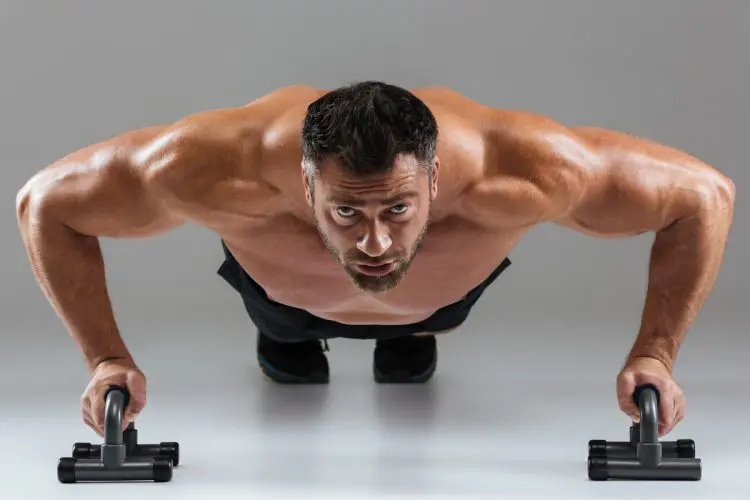
Training with nothing but bodyweight exercises can sometimes seem daunting. You may feel like your choice of exercises is limited or that you don’t know how to work out effectively without things like chest press and lat pulldown machines. You may not be familiar with or be able to perform the main calisthenic exercises.
Don’t worry; we’ve got your back!
Level Up Your Fitness: Join our 💪 strong community in Fitness Volt Newsletter. Get daily inspiration, expert-backed workouts, nutrition tips, the latest in strength sports, and the support you need to reach your goals. Subscribe for free!
In this article, we’re going to introduce you to a handful of the best calisthenic exercises and provide you with a few simple programs to follow so you can get started with calisthenic training.
What is Calisthenics Training and What are the Benefits?
For the sake of clarification, calisthenics training means working out with bodyweight exercises. Examples of calisthenic exercises include push-ups, pull-ups, and unweighted squats and lunges, as well as gymnastic moves, such as handstands and rope climbing.
The word calisthenics has Greek origins and basically means beautiful strength, which is an excellent way to describe this ancient form of exercise.
Calisthenics is popular worldwide and is a training method used in the military, for urban street or playground workouts, in martial arts, and by professional and recreational athletes.
You can adapt calisthenic training to meet most training goals, including burning fat, improving general fitness, building muscle, or increasing strength. It all depends on which exercises you choose, how you arrange them into a workout, and how often you train.
The benefits of calisthenic training include:
Convenience
You don’t need very much equipment to get a tremendous calisthenic workout, and many bodyweight exercises need nothing but some space in which to move. Because of this, you can train almost anywhere or at any time.
You won’t have to waste time traveling to a gym and can work out at home, in a hotel room, during your lunch break at work, or almost anywhere and anytime you want. With fewer barriers to exercise, you should find sticking to your workout plan much easier.
Economics
With very little if any equipment to buy, calisthenic training is ideal if you don’t want to spend a lot of money on your workout routine.
Some exercises do need things like a pull-up or dipping bars, but these can often be bought relatively cheaply, and you can also use the equipment in parks and outdoor urban gyms, which is usually free to use.
Also, a lot of exercises require no equipment at all. In short, if you want to work out cheaply or for free, calisthenics could be a good option.
Joint-friendly
Any exercise can cause elbow, knee, or shoulder pain, but calisthenic exercises are often more joint-friendly than similar movements done with free weights or machines. That’s because you can easily adapt them to match your morphology, i.e., height and limb length.
Also, unlike strength training machines and even some free weight exercises, you can easily change the position of your body to stress your muscles and joints from a different angle. This can help prevent overuse injuries that are sometimes caused by repetitive movements.
Easy to progress or regress
Most calisthenic exercises can be adapted according to your current level of fitness. You can start with easier variations and gradually make them more difficult as you get stronger.
Many people wrongly assume that the only way to make bodyweight training harder is by doing more reps, but that’s not necessarily the case. Instead, you can change the position of your body to make your chosen exercise harder, providing an alternative way to make progress. For example:
Kneeling push-ups -> regular push-ups -> decline push-ups -> plyo push-ups -> handstand push-ups
Develop balance, flexibility, and mobility
Calisthenic exercises involve your whole body. You may be training your legs or your chest, but all of your other muscles and joints are involved too. It’s almost impossible to do even simple calisthenic exercises without putting your whole body to work.
In contrast, a lot of gym-based exercises isolate one body part at a time, or they support your body in such a way that you use fewer muscle groups. This is not a bad thing but could mean you develop a very specialized type of strength that may not translate well to life outside the gym.
For example, leg presses are a very useful lower body exercise, but they won’t do much for your balance or coordination. In contrast, single-leg pistol squats are much more neurologically challenging and will build not only your strength but your mobility, balance, and coordination too.
To reiterate, this doesn’t mean that free weights or machines are in any way bad; it’s just that, if you want to develop more functional strength and athleticism, calisthenic exercises may be a useful addition or alternative.
You can combine calisthenics with other forms of training
There is no best type of workout, and there is no need to choose one training method and use it in exclusion of all others. Calisthenics, kettlebells, resistance bands, and barbells are all training tools, and each one has advantages and drawbacks.
While you can choose one type of training and use it exclusively if you wish, you may get better results if you combine training methods to create a more holistic workout. Calisthenics combine easily with all other types of training.
Avoid the crowds
If you prefer to train on your own, calisthenics will be very appealing. You can work out at home on your own or head off into the countryside with nothing but an exercise mat for company!
Because you won’t be lifting heavy weights, you don’t need a spotter and, for most exercises, can train safely on your own and without help or spotters.
Essential Calisthenics Exercises
There are literally hundreds of calisthenic exercises to choose from. While all that variety is part of the appeal of this type of training, for a beginner, it’s also something of a drawback.
A lot of calisthenic exercises are much too advanced for beginners, and trying things like the human flag or front levels before you have built some basic fitness and strength is a recipe for frustration and injury.
Before trying to emulate the fantastic feats of the famous calisthenics experts on YouTube (many of whom are ex-gymnasts anyway), make sure you master these basic movements.
- Push-ups
- Pull-ups/chin-ups
- Dips
- Squats
- Lunges
- Planks
These exercises work all of your major muscles and also provide the foundations on which more advanced exercises will be built. To get the most from these exercises, make sure you do them correctly!
Level Up Your Fitness: Join our 💪 strong community in Fitness Volt Newsletter. Get daily inspiration, expert-backed workouts, nutrition tips, the latest in strength sports, and the support you need to reach your goals. Subscribe for free!
1. Push-ups
Push-ups are probably the most well-known calisthenics exercise. They work your chest, shoulders, and triceps. In addition, push-ups teach you the importance of full-body tension as you’ll need to keep your whole body tight to do them correctly.
How to do it:
- Squat down and place your hands flat on the floor, with your fingers pointing forward. Your hands should be roughly shoulder-width apart. Walk your feet back until your body is straight. Tense your legs and abs to maintain your alignment. Pull your shoulders down and back to stabilize them, and tuck your chin in.
- Bend your arms and lower your chest down to within an inch of the floor. Keep those abs braced!
- Extend your arms and push yourself back up until your arms are straight but not locked.
You can make push-ups easier by bending your legs and resting on your knees or doing them standing with your hands against a wall.
Performance goal: Once you have mastered regular push-ups, work on building up to 30 perfect push-ups without stopping. Once you can do that, you will be ready for more advanced push-up variations, such as decline, plyo, and handstand push-ups.
[Related: 13 Next Level Push-Up Variations For Mass, Strength, and Performance]
2. Pull-ups/chin-ups
Calisthenics training beginners often find that pull-ups and chin-ups are the most daunting exercises to try. That’s hardly surprising, given that they involve lifting your entire body weight with just your arms!
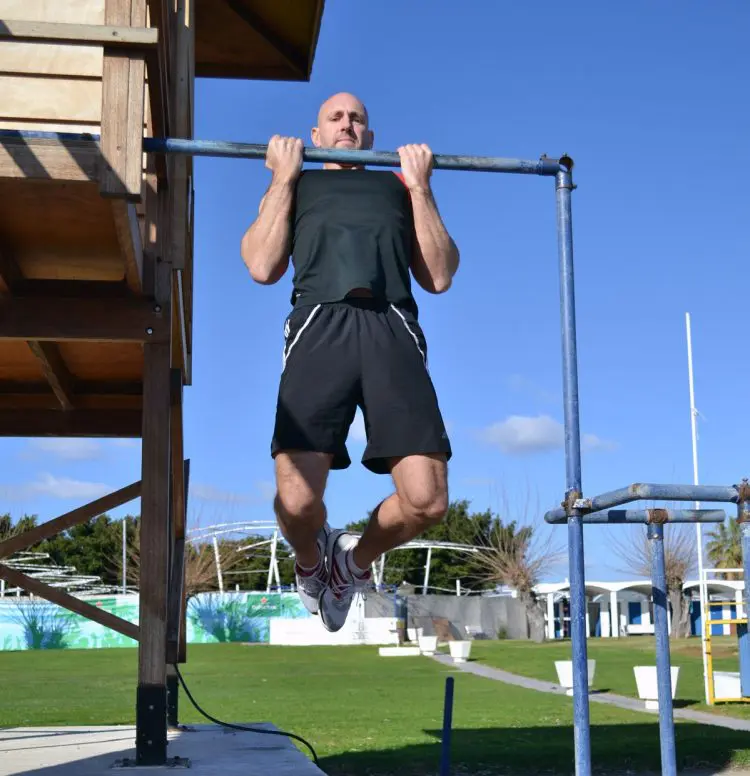
This important exercise is one of the best ways to strengthen your back and biceps and is a cornerstone of calisthenics training. It might take you several weeks or even months to achieve your first pull-up or chin-up. However, once you get it, there will be no holding you back!
How to do it:
- Hang from an overhead bar using a slightly wider than shoulder-width overhand grip (pull-ups) or a shoulder-width underhand grip (chin-ups). Your arms should be straight and your shoulders down and back. Brace your abs to stabilize your legs.
- Without kicking or swinging, lean back slightly, lift your chest, bend your arms, and pull your chin up and over the bar.
- Lower yourself back down smoothly and under control; don’t just drop.
Make pull-ups and chin-ups easier by hanging a strong resistance band around your bar and standing or kneeling on it. That way, the band will help to pull you up as it shortens. Alternatively, use your legs to lift you and lower yourself back down using your arms. Losing weight will also make pull-ups easier.
Performance goal: Doing your first pull-up or chin-up is a significant fitness landmark. Once you’ve done one, work on hitting five and then ten straight reps. When you can do ten, you’ll be ready to try more advanced variations, such as weighted pull-ups and even muscle-ups.
3. Dips
Your final upper body exercise is dips. While this exercise uses the same muscles as push-ups, it’s considerably harder because you’ll be lifting your entire body weight with just your arms. It also works your muscles from a different angle, making them a useful push-up alternative.
How to do it:
- Place your hands on the dipping bars, so your palms are facing inward. Support your weight on straight arms, but do not lock your elbows. Push your shoulders down and back and brace your abs to stabilize your legs.
- Leaning forward slightly, bend your arms and lower your chest down between your hands. Take care not to descend too far as you could hurt your shoulders.
- Push yourself back up and repeat.
Make this exercise easier by looping a resistance band over your dipping handles and kneeling or standing on it. Alternatively, use your legs to lift you and lower yourself back down using your arms. Losing weight will also make dips easier.
Performance goal: Like pull-ups and chin-ups, your first dip is a major achievement. Once have can do one unaided rep, work on reaching five and then ten perfect reps. Once you can do ten reps, you’ll be ready to start training for muscle-ups.
4. Squats
Squats are arguably one of the most crucial leg exercises you can do. They work your entire lower body and are also an important functional movement. Most people do squats as part of their day to day life, such as getting out of a chair and in or out of a car.
How to do it:
- Stand with your feet about shoulder-width apart, toes turned slightly outward. Clasp your hands in front of you or place them on your temples if you wish. Brace your abs and look straight ahead. Spread your weight evenly from the balls of your feet to your heels.
- Push your hips back, bend your knees, and descend until your thighs are roughly parallel to the floor. Do not allow your lower back to round. Keep your chest up but, also, do not hyperextend your spine. Do not let your knees travel beyond your toes, or let your knees collapse inward or fall out.
- Drive your feet into the floor and stand up.
You can make squats easier by descending onto a box or chair to control how far you go down. Use a lower box/chair as you feel stronger. You can also use your arms for assistance. Tie a towel to a strong, waist-high anchor, and grip it with both hands. Pull with your arms to take some weight off your legs.
Performance goal: Build up to doing 30 and then 50 non-stop reps of squats. Once you can do that, you’ll be ready for more advanced leg exercises, such as squat jumps, Bulgarian split squats, and single-leg pistol squats.
5. Lunges
Lunges are similar to squats, but you’ll be working one leg at a time. This exercise is good for developing your balance and coordination, as well as hip mobility. Lunges also put more weight on your front leg, making them a little more demanding than squats.
How to do it:
- Stand with your feet together, hands by your sides. Stand tall and look straight ahead. Keep your arms by your sides or place your hands on your hips. Brace your abs.
- Take a long step forward and bend your legs. Lower your rear knee down until it’s about an inch above the floor. Try to keep your front shin relatively vertical and your torso upright.
- Push off your front leg and return to the starting position. Do another rep with the same leg or alternative legs rep by rep as preferred.
Make lunges a little easier by doing them next to a wall and using it for balance. Alternatively, do static lunges, AKA split squats, which require less coordination.
Performance goal: Work up to doing 15 reps per leg. Once you can do alternating lunges relatively comfortably, you can progress to Bulgarian split squats, walking lunges, and even plyometric (jumping) lunges.
6. Planks
Planks work your anterior core, the muscles on the front of your abdomen, and the deeper muscles that stabilize your spine. Many calisthenics training exercises require a high degree of core strength, so this is an essential exercise.
How to do it:
- Lie down on your stomach and place your elbows and forearms on the floor. Your elbows should be directly under your shoulders.
- Lift your hips off the floor, so your body forms a straight line. Tense your legs, abs, and upper body.
- Without holding your breath, maintain this position for as long as you can. Focus on tensing your midsection as hard as you can.
You can make this exercise less challenging by bending your legs and resting on your knees. You can also place your arms on a raised surface, such as a box, step, or bench.
Performance goal: Once you can hold a plank for 60 seconds, you are ready to make this exercise more challenging. Try lifting one arm or one foot off the floor, placing your arms on a stability ball or BOSU, or progressing onto movements like L-sits or rollouts. However, with any of these progressions, never forget to brace your abs like you are planking.
Of course, there are hundreds of other calisthenic exercises you can do. This list of six is just a good place to start. Master these and you’ll soon be ready for some more advanced moves.
Calisthenics Workout Plans
Here are three different workouts to try that involve the six exercises described above. Each one uses a different set/rep scheme to keep things varied and interesting.
Warm-up for a few minutes before attempting any of these workouts. Jog or jump rope for 5-10 minutes, and then do dynamic mobility exercises and stretches for all your major muscles and joints.
Calisthenics Workout 1: Keep It Simple
| Exercise | Sets | Reps | Recovery | |
| 1 | Lunges | 4 | Max reps | 60 seconds |
| 2 | Dips | 3 | Max reps | 60 seconds |
| 3 | Pull-ups | 3 | Max reps | 60 seconds |
| 4 | Squats | 4 | Max reps | 60 seconds |
| 5 | Push-ups | 3 | Max reps | 60 seconds |
| 6 | Planks | 3 | Max time | 60 seconds |
For this simple workout, just do as many reps as you can of each exercise. Rest 60 seconds and then repeat. Don’t worry if your rep count decreases set by set; that’s entirely normal and just shows that you are getting tired.
Calisthenics Workout 2: Ladders
| Exercise | Sets | Reps | Recovery | |
| 1 | Pull-ups | 3 | 1,2, 3-rep ladders | 90 seconds |
| 2 | Dips | 3 | 1,2, 3-rep ladders | 90 seconds |
| 3 | Lunges | 3 | 2, 4, 6-rep ladders | 90 seconds |
| 4 | Push-ups | 3 | 2, 4, 6-rep ladders | 90 seconds |
| 5 | Squats | 3 | 3, 6, 9-rep ladders | 90 seconds |
Ladders are an alternative to standard sets and reps. With this method, you start by doing a very low number of reps, rest a few seconds, and then do a few more reps. You continue adding reps until you cannot continue. Then, after resting, you start over at the beginning.
For example, for push-ups, your workout could look like this:
- 2 push-ups
- Rest 10-15 seconds
- 4 push-ups
- Rest 10-15 seconds
- 6 push-ups
- Rest 10-15 seconds
- 8 push-ups
- Rest 10-15 seconds
- 10 push-ups (feeling too tired to manage 12 reps)
- Rest 90 seconds and then start over with two reps.
Pull-ups and dips are demanding exercises, so they use one rep increments, i.e., 1, 2, 3, etc. Lunges and push-ups are easier, so for those exercises, you’ll use two rep increments, i.e., 2, 4, 6, etc. Squats are the easiest of the five exercises, so for that move, you’ll use three rep increments, i.e., 3, 6, 9, etc.
Planks don’t fit this format, so finish your workout with 2-4 sets of 30-60 second planks, so you don’t neglect your core.
Calisthenics Workout 3: Timed Circuit
| Exercise | Sets | Reps | Recovery | |
| 1 | Pull-ups | 3 | 45 seconds | 15 seconds between exercises.60-90 seconds between laps. |
| 2 | Lunges | |||
| 3 | Dips | |||
| 4 | Planks | |||
| 5 | Squats | |||
| 6 | Push-ups |
For this workout, do one set of each exercise in turn. Do as many reps as you can in the allotted time. Take 15 seconds to rest between exercises and a longer break once you have completed the final movement. If 45 seconds is too long, feel free to do each exercise for 30 seconds. You can also do fewer laps if necessary.
Do each workout once per week or do your favorite one several times per week as preferred. Because these are full-body workouts, make sure you do them on non-consecutive days, i.e., Monday, Wednesday, and Friday, to allow plenty of time for rest and recovery. Finish each workout with some stretching to avoid post-workout muscle soreness.
More on Calisthenics:
- The 11 Best FREE Calisthenics Programs
- Best Calisthenics Triceps Exercises
- The 12 Best Calisthenics Biceps Exercises and Workout
- Hardcore Calisthenics Arm Workout To Build Muscle Mass and Strength
- Calisthenic Shoulder Exercises and Workout
- The Best Calisthenic Leg Workout
- A Routine for Daily Calisthenics Training
- Weighted Calisthenics Best Exercises and Workouts
- Calisthenics Back Workout for Size and Strength
- Savage Calisthenics Abs Workouts For Beast Gains (All Levels)
- Calisthenics Workout Plan: A Beginner’s Guide
Calisthenics Workout Plan – Wrapping Up
There are lots of reasons to give calisthenics a try. It’s a cost-effective and time-efficient way to work out and using bodyweight exercises means you can train out at home or while you are traveling. Plus, with no heavy weights to worry about, you can exercise alone and in relative safety; you don’t need spotters.
Does this mean that barbells and resistance machines are redundant or that calisthenics is any better than other forms of training? Absolutely not! Bodyweight exercises are just another tool you can use to get fit, increase your strength, and build muscle.
Use this guide to get started with calisthenics training and discover the benefits of bodyweight training for yourself.

